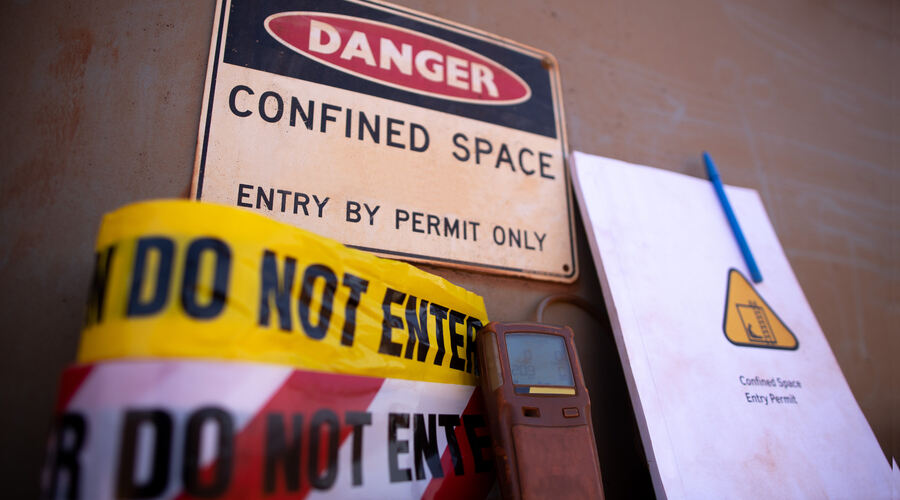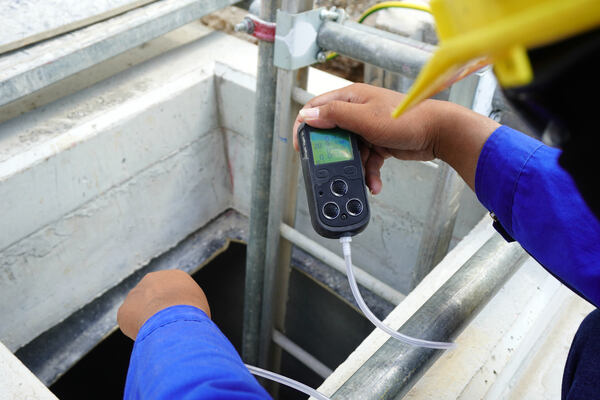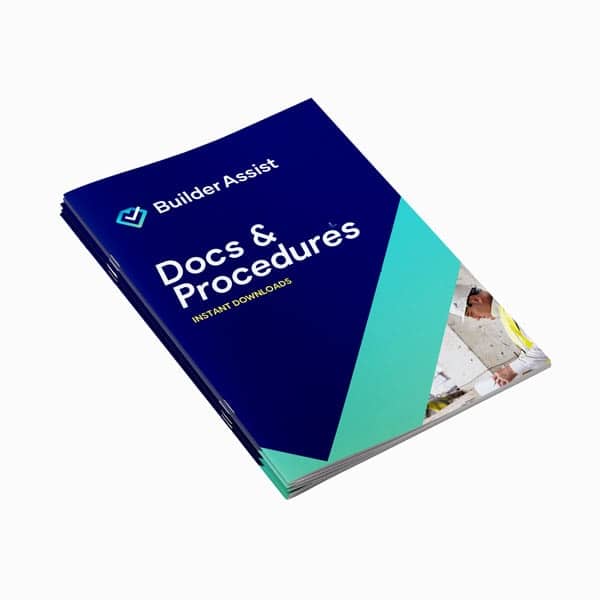
From time-to-time, building industry workers are required to enter confined spaces to reach hard-to-get-to places and complete work.
A "confined space" refers to an area not designed for continuous human occupancy. These spaces have limited entry and exit points and can pose significant risks to those working within them.
Below, we explore what constitutes a confined space, the importance of safety procedures, and how to keep workers safe in this challenging environment.

Working in confined spaces presents unique challenges and risks. Understanding the definition of confined space and implementing strict safety procedures are critical to protect workers. Proper training, hazard identification, effective communication, and emergency preparedness are essential components of a comprehensive safety plan.
Defining a Confined Space
A confined space in the building industry is typically an enclosed or partially enclosed area that restricts entry and exit. This limitation can make it difficult for workers to enter, exit, or move within the space. Examples include underground vaults, tanks, silos, storage bins, and crawl spaces. These areas are not meant for people to occupy for extended periods, making them unique in terms of safety considerations.
Moreover, these spaces often have poor ventilation, which can lead to hazardous atmospheres. For instance, there could be a lack of oxygen, the presence of toxic gases, or a risk of fire. Workers and tradespeople must recognise these dangers and take appropriate precautions.
The Importance of Safety Procedures
Safety procedures are vital when working in confined spaces. The unique risks associated with these environments require specialised training and equipment. Safety procedures are designed to protect workers from the potential hazards they may face. For example, the risk of suffocation, exposure to toxic substances, or entrapment.
Implementing safety procedures helps ensure workers can enter and exit confined spaces safely. This includes having a clear plan for emergencies, such as a worker becoming unconscious or trapped. Proper safety protocols can make the difference between life and death in these situations.
Confined Space Safety Resources
Entering a confined space on a construction site is deemed high-risk construction work. By law, you must complete a Safe Work Method Statement (SWMS) before any high-risk construction work commences. A SWMS outlines the high-risk activities to be carried out, the hazards involved, and the measures to control the risks.
Builder Assist provides a vast range of SWMS templates to assist with on-site safety documentation including a Confined Space Safe Work Method Statement template.
In addition, Builder Assist provides a complete Confined Space Management Plan Procedure to support on-site safety compliance.
To learn more about SWMSs and when they’re required, visit our blog “What is a SWMS?”.
Identifying Hazards in Confined Spaces
Before entering a confined space, you must identify potential hazards. This involves assessing the space for risks like hazardous atmospheres, structural instability, or the presence of harmful substances. Workers should use gas detectors and other monitoring equipment to test for dangerous gases or low oxygen levels.
Importantly, identifying hazards is not a one-time activity. Continuous monitoring is necessary, as conditions within confined spaces can change rapidly. For example, welding activities can deplete oxygen levels or introduce harmful fumes.
The Role of Training and Competency
Training is essential for safety in confined spaces. Workers must be trained to understand the unique risks associated with these environments. They should know how to use personal protective equipment (PPE) effectively and operate safety equipment, such as harnesses and gas detectors.
Additionally, workers should be trained in emergency response procedures. This training should include what to do if something goes wrong, such as a sudden change in atmospheric conditions or a structural collapse. Competency in these areas ensures that workers can respond appropriately to emergencies.
Entry and Exit Procedures
Safe entry and exit procedures are critical when working in confined spaces. These procedures should be clearly outlined and communicated to all team members. Before entering, a confined space should be thoroughly inspected, and any potential hazards should be addressed.
A permit-to-work system is often used to control access to confined spaces. This system ensures that only authorised personnel enter the space and that they are aware of the risks involved. Importantly, the permit should outline the safety measures in place and the emergency procedures to follow.
The Importance of PPE
Personal Protective Equipment (PPE) is a vital part of safety in confined spaces. Depending on the hazards present, PPE may include respiratory protection, helmets, gloves, and protective clothing. It's essential that all PPE is in good condition and fits properly.
PPE is not a substitute for other safety measures, but a last line of defence. Workers should still follow all safety procedures and use other safety equipment as required. For example, a harness system may be necessary to prevent falls in vertical spaces.
Monitoring and Communication
Effective communication is crucial in confined space work. Workers should be in constant contact with a safety monitor or team leader outside the confined space. This communication can be facilitated through radios or other communication devices.
Monitoring is also vital. Continuous air quality monitoring can alert workers to changes in the atmosphere, allowing them to evacuate if necessary. Subsequently, it's essential that monitoring equipment is regularly calibrated and maintained.
Emergency Preparedness
Even with the best safety procedures in place, emergencies can happen. It's vital to have a robust emergency response plan. This plan should include rescue procedures and the roles of team members in an emergency. Rescue equipment, such as lifelines and breathing apparatus, should be readily available and in good working condition.
In addition, regular drills and training sessions can help ensure that all team members are prepared to act quickly and effectively in an emergency. This preparation can save lives and minimise the impact of accidents.
Conclusion
Working in confined spaces presents unique challenges and risks. Understanding the definition of confined space and implementing strict safety procedures are critical to protect workers. Proper training, hazard identification, effective communication, and emergency preparedness are essential components of a comprehensive safety plan.
By following these guidelines, builders and tradespeople can ensure a safe working environment, even in the most challenging conditions. Remember, safety is not just a legal requirement—it's a moral obligation to protect the well-being of everyone involved.



